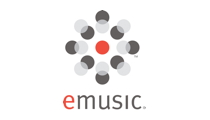This website uses cookies so that we can provide you with the best user experience possible. Cookie information is stored in your browser and performs functions such as recognising you when you return to our website and helping our team to understand which sections of the website you find most interesting and useful.
Business News Digital
eMusic announces return to indie label roots
By Chris Cooke | Published on Tuesday 30 September 2014
So, a definite rewind here, though very possibly too little too late. Time to talk about eMusic everybody. Yeah, you remember eMusic, possibly the first ever music download service?
You know, the one that went live in 1998, and which led the way in an era that I think we can all agree was the happiest time for digital music: Peoplesound, Vitaminic, iCrunch, Wippet, ah those the were the days. Long before anyone had even thought of setting up a streaming service. Oh, hang on, Chrysalis’s Puremix and Yahoo’s Launch. Yeah, basically digital music was all sorted by 2000, it’s just the majors were in denial and BT was dithering about broadband.
For years eMusic positioned itself as the download store for real music fans, specialising in indie label content. Though that was more circumstance than anything else. eMusic was an MP3 download service, and these were the days when the major labels were still refusing to sell music in any file format that didn’t come with digital rights management technology, because that would be convenient, and the last thing music consumers needed was convenience (major label execs in 2004 were sort of the Thom Yorkes of their day).
Even after the majors finally dropped the DRM and properly kickstarted the download market, the big record companies weren’t keen on eMusic’s novel business model. It was a subscription download service, where users paid a set fee each month and were then able to download a set number of tracks. It meant users were committed to a set monthly spend, but the per-track cost of each download was less as a result.
The majors didn’t oppose to the subscription approach in principle, but didn’t like the fact each track was priced at ‘one credit’, just as they were trying to instigate variable pricing on iTunes (mainly so they could subtly push the average price of a download upwards).
In order to get the majors on board, eMusic had to alter its business model, which was unpopular with both the indie labels that had supported the service from the off, and many of its customers. Yet by this point iTunes and Amazon had so cornered the mainstream download market, eMusic really struggled to capitalise on the major label content it now had access to.
Facing a slide into obscurity, the company downsized and later merged with an ebook firm called K-NFB Reading Inc. Most people in the industry, even digital music execs, more or less forgot eMusic still existed, except when it popped up as a sponsor at one industry event or another.
But it does still exist, and does still have a userbase of sorts. And, according to the New York Times, that membership received an email yesterday announcing the service was “exiting the mainstream music business”, ending its partnerships with the majors, and returning to its roots as a hub of indie label content.
Says the note: “Beginning 1 Oct 2014, the leading download-to-own music retailer will be exiting the mainstream music business and exclusively offering independent music. The company’s goal is to build the most extensive catalogue of independent music in the world”.
Which is an admirable goal, though you can’t help thinking that the consumer base for such a thing were the first to dump downloads and sign up to Spotify et al. And on the other side of the equation, the indie labels which ten years ago would have got wholly behind such a proposition, are now very much focused on the booming streaming revenue that is becoming core to their businesses.
Still, Peoplesound, Vitaminic, iCrunch, Wippet, Puremix, Yahoo Launch – eMusic is the last survivor of the very early days of digital music. So it’s sort of nice to see it’s still fighting the fight to stay online. Next week: myCokeMusic, time for a comeback?






